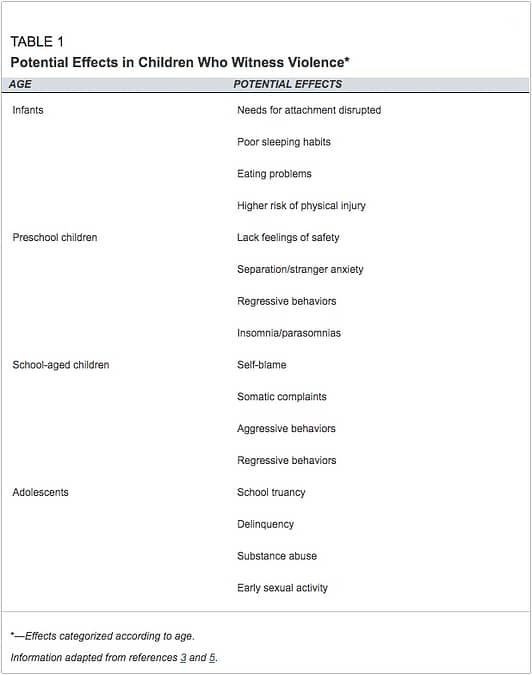“Children who witness violence in the home and children who are abused may display many similar psychologic effects,” according to Dr. Melissa M. Stiles, M.D., University of Wisconsin-Madison Medical School. This topic of children, domestic violence and the role of physicians has gained considerable prominence in recent years, as more and more physicians take a stand and contend that medical professionals MUST be better educated, more prepared, and much more proactive in addressing childhood adversity and its impact on physical health – for both the short-term and long-term sake of their young patients.
In this detailed article, Dr. Stiles discusses the long list of dire repercussions on children who experience domestic violence (Childhood Domestic Violence or CDV), which are very similar to those for children who experience physical child abuse. She punctuates that “the majority of the medical literature to date has focused on the effect of domestic violence on the primary victim” but that much more attention must be paid to the effects of “witnessing” the violence even if the child is not the primary victim.
Among the many impacts, Dr. Stiles points out that these children are at a heightened risk for anxiety and depression but also for fighting, bullying, lying, and cheating, and often have social competence problems, struggle academically, have difficulties forming healthy relationships. They also learn violent behavior as a means of conflict resolution. She does concede that because many of the children growing up with DV also experience direct abuse, it is difficult to separate and differentiate which impacts and consequences are a direct result of the CDV and which are a byproduct of the direct abuse. Also the impact varies with age, gender, intelligence, and individually from person to person.
But one thing she is adamant about – as are more and more physicians – is that medical schools should educate future physicians properly about the potential ramifications domestic violence on children (and not just on the primary victims in these cases), and properly prepare them to more confidently and proactively engage with patients in screening and prevention techniques that can be life-changing. She provides an overview of some of these approaches for physicians to get involved in the discussion and exert positive influences, which can be a critical step in DV and especially CDV prevention.
Read Dr. Stiles’ full article below.
“Witnessing Domestic Violence: The Effect on Children”, Melissa M. Stiles, M.D., University of Wisconsin-Madison Medical School, Madison, Wisconsin, American Family Physician, 2002 Dec 1;66(11):2052-2067, https://www.aafp.org/afp/2002/1201/p2052.html


